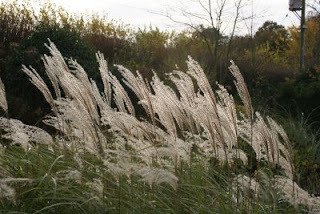I got my copy of Gardens Illustrated through yesterday. As ever it was full of jaw-droppingly gorgeous pictures, this time of frost-coated borders, with shrubs and herbaceous plants standing upright and elegant, apparently well into winter.
Well, I took the decision to start cutting back our borders yesterday and since this goes somewhat against current thinking, I felt I should explain.
One reason is practical – I simply don’t have the labour hours to do it in February just when all the new plants start arriving in the nursery. And I really want to see the shape of the garden now to plan changes – it’s not easy to do that with stems flopping everywhere. But perhaps more fundamentally, I don’t believe that you can just leave the average mixed border through to February and it will just look good. None of the glorious borders shown in G.I. were photographed on a grey, wet day in November! I think this vision has to be planned for, with a good core structure, protection from wind and with careful selection of plants that do stand well into winter, just waiting for that perfect, frost-in-sunshine moment. So that’s something to aim for. And the stock bed areas offer more than enough untamed growth for the wildlife to thrive in – as the photo below shows.
In the garden, we are leaving any plants that really do still look good, of course. And prime amongst these are evergreen and long-lasting grasses. Not everyone’s first thought, but these couple of photos should help persuade you otherwise. The first is of a bronze Carex, taken last February. The second is Miscanthus sinensis ‘Undine’, taken last week. I’ll take some more when the predicted cold snap arrives in a few days.


One Response to “To clear up, or not to clear up?”
Hello Trillium! Just catching up with your blog, & I had to say how much I love your frosty photos 😀